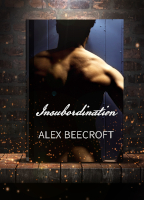Write On – Finished First Draft
So, following the ‘just plough on until you reach the end’ advice – advice which is much easier to follow if you have a plot plan, btw, because at least you’re never left not knowing what happens next – you’ve finished your first draft. What to do now?
1. Celebrate. Reward yourself. We train dogs and children to do good things by rewarding them when they achieve them and not rewarding them when they don’t. Train yourself to finish your first drafts by rewarding yourself when you finish, whether that’s with a new book to read or a trip out, or a packet of smarties, or whatever your imagination most wants and your pocket can reasonably afford. I recommend getting something you wouldn’t have allowed yourself otherwise. Something that will last quite a while and will continually remind you of the benefits of finishing your stuff.
2. Take the rest of the day, if not the week off. Writing a novel is a long sustained mental effort, and just as you would rest at the end of a physical marathon, if you didn’t want to end up like Pheidippides – glorious but dead – you should also rest after a mental marathon.
Of course, taking the rest of the week off must not be allowed to turn into taking the rest of the month off. It’s very easy, once you get off the writing bandwagon, not to get back on again. As with physical training, a few days off won’t harm you, but leave it too long and you’ll find you’ve lost all your muscle and you’re more unfit than you were when you started. Then you’ll have to go through all that slow, tedious, painful warming up again before you can get back on track.
(Which in writerly terms translates to whining, making coffee, doing the ironing, spending longer at work, doing your tax return, watching another episode of [box set of choice] discovering an obscure relation you really have to visit and then finally eking out 250 words in the last 5 minutes of the day before bedtime, before falling into bed hating yourself for being such a loser.)
3. Now (mentally) put a tea towel over the first draft and set it on a mental airing cupboard shelf to give it some time to prove.
Or to be less metaphorical, commit the first draft to the care of your subconscious and turn your mind to something else for a while. This is a good time to do the plot plan of the next book, or write a couple of short stories, to edit the book you finished before this one, or to do some other kind of writerly job which has no connection to this one.
4. Once you’ve done that, and you’ve got to the point where you’ve mostly forgotten your first draft, you’re ready to give it another go. I like to print it out for this stage, which I think of as either the ‘second draft’ or the ‘first edit’. Somehow it’s easier to see things on the printed page than it is on the screen.
Now it’s time for a slow read through, with a notebook to hand.
Don’t even start fixing things at this stage. The read through is to figure out what needs to be done, so you can do it in the most efficient fashion. So you do read through and notes first, then you fix things.
There’s a good reason for this. As you read, you’ll notice lots of typos and awkward sentences, and it’s worthwhile noting them with a number on your list of things to fix. But you’ll also notice that there are plot holes, there are places where you filled in the flow with [research this later] notes, there are timeline problems and big, structural elements that are wonky. There’s no point polishing sentences that are only going to end up on the cutting room floor when you have to fix the big plot hole associated with them.
Once you’ve identified all the things that are wrong with the book, fix the big things first. First close the holes and fix the time line. Then you can go through and do all the research you left for later, incorporating that where it’s needed. This will often involve getting rid of some scenes altogether and doing large chunks of re-writing. That’s why it’s still no place to worry about the commas.
With the major problems sorted and the manuscript now making sense as one coherent story with all the appropriate research incorporated, then you can do another pass, concentrating on making those sentences beautiful. But for the moment, the first editing pass is a structural job. Here’s where you decide whether your characters are acting in character, where you decide if a boring bit of exposition ought to be re-written as an exciting scene, or an interminable scene can be shortened into an off the cuff exposition while a character does something else. Here’s where you identify the boring bits and either re-write them to be interesting or delete them and write something new to replace them.
Which leads me into the exciting world of editing, of which, more anon.

